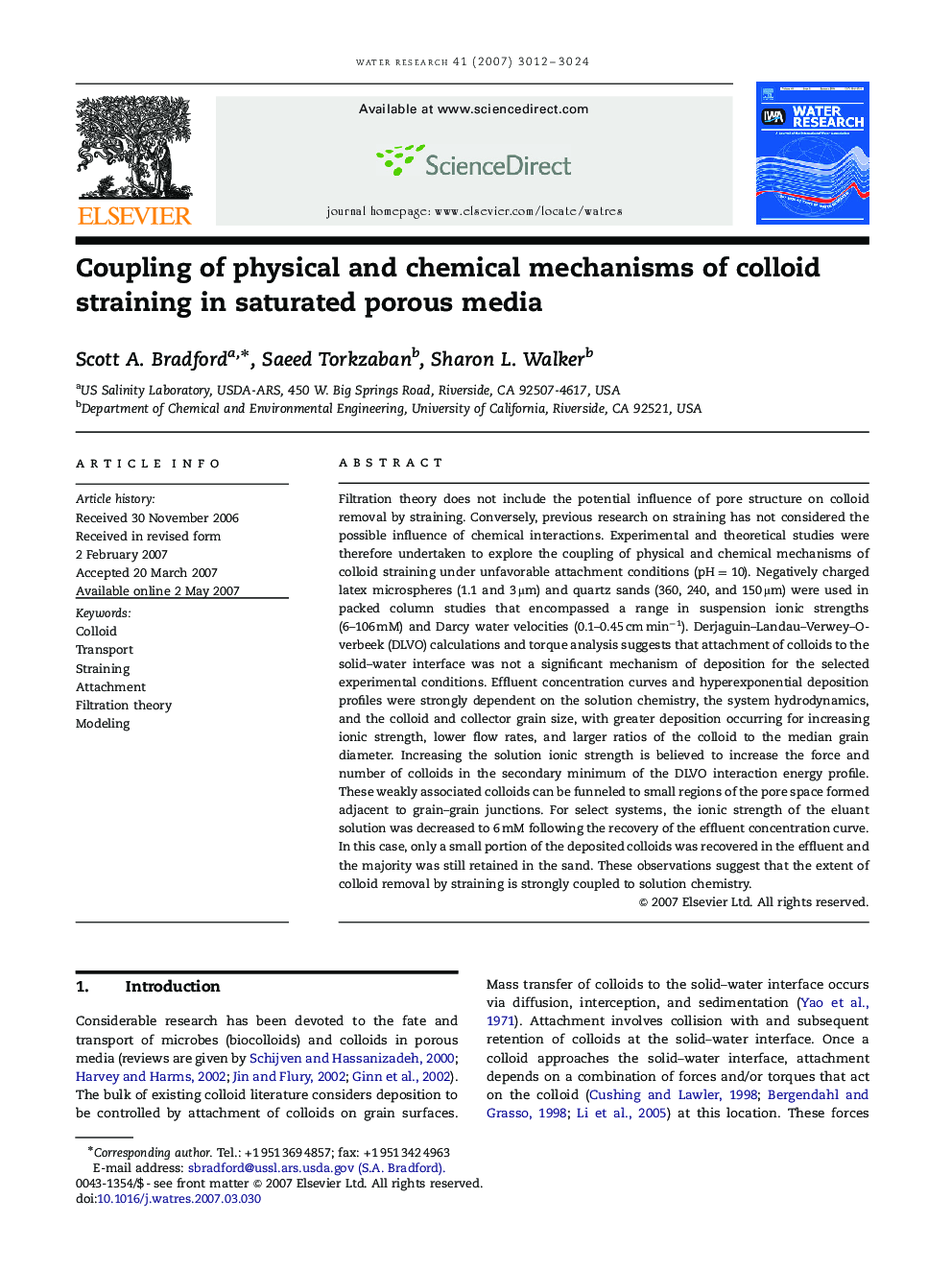| کد مقاله | کد نشریه | سال انتشار | مقاله انگلیسی | نسخه تمام متن |
|---|---|---|---|---|
| 4484014 | 1316906 | 2007 | 13 صفحه PDF | دانلود رایگان |

Filtration theory does not include the potential influence of pore structure on colloid removal by straining. Conversely, previous research on straining has not considered the possible influence of chemical interactions. Experimental and theoretical studies were therefore undertaken to explore the coupling of physical and chemical mechanisms of colloid straining under unfavorable attachment conditions (pH=10). Negatively charged latex microspheres (1.1 and 3 μm) and quartz sands (360, 240, and 150 μm) were used in packed column studies that encompassed a range in suspension ionic strengths (6–106 mM) and Darcy water velocities (0.1–0.45 cm min−1). Derjaguin–Landau–Verwey–Overbeek (DLVO) calculations and torque analysis suggests that attachment of colloids to the solid–water interface was not a significant mechanism of deposition for the selected experimental conditions. Effluent concentration curves and hyperexponential deposition profiles were strongly dependent on the solution chemistry, the system hydrodynamics, and the colloid and collector grain size, with greater deposition occurring for increasing ionic strength, lower flow rates, and larger ratios of the colloid to the median grain diameter. Increasing the solution ionic strength is believed to increase the force and number of colloids in the secondary minimum of the DLVO interaction energy profile. These weakly associated colloids can be funneled to small regions of the pore space formed adjacent to grain–grain junctions. For select systems, the ionic strength of the eluant solution was decreased to 6 mM following the recovery of the effluent concentration curve. In this case, only a small portion of the deposited colloids was recovered in the effluent and the majority was still retained in the sand. These observations suggest that the extent of colloid removal by straining is strongly coupled to solution chemistry.
Journal: Water Research - Volume 41, Issue 13, July 2007, Pages 3012–3024